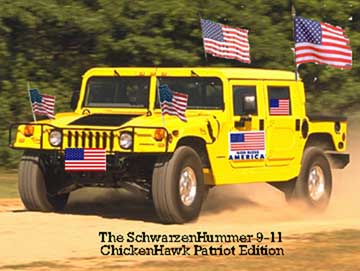
©2004, UrbisMedia
The One-Horsepower Solution
Enduring a breakdown (of the mechanical sort, that is) on the freeway is frustrating enough experience; but sometimes one most also suffer the gleeful barbs of passing motorists whose own vehicles are, at least momentarily, in good working order. At a recent such misfortune I heard one passing motorist shout, with some Doppler effect, a remark I had not heard in years put to drivers of disabled automobiles: “Get a horse!” Rather than getting me angry, it got me to thinking.
It has often been remarked that Americans have a love-hate relationship with the automobile. There are several ways in which that observation might be interpreted; but one candidate is that people love their own cars and hate everyone else’s, for it’s all those other cars that make using ours more difficult to enjoy.
There’s no need to recite the wealth of statistical data which document that most every city, and particularly those like San Diego, are in for more crowded streets and freeways, scarcer parking space, and are heading in the direction of that dreaded new phenomenon, “gridlock.” There is ample experiential evidence for all those who must daily venture into the land of the commuter.
The automobile has been the bane of urban planners since it came within the economic reach of the average American. It is acceptable in planning circles to become resigned to the popularity of the automobile, but still rather heretical to credit it with any improvement in the quality of urban life. Yet it was as a welcome alternative over its immediate, comparable predecessor-the horse and carriage (not mechanized mass transit)-that the automobile was first received in the early years of this century.
Consider the original pollution problem. In 1875, London had to remove 1,000 tons of manure from its streets every day. New York City had a population of over 120,000 horses at the turn of the century, which produced a daily 130-ton hill of manure. Manure-laden streets, in addition to olfactory offense, bred billions of flies that carried some thirty different diseases, some quite serious. Further, they attracted large numbers of birds, which cancelled out the advantage of their insect diet with their own considerable droppings. For a time, the manure, which made good fertilizer, was carted to nearby farms; but as nearby farms were rapidly pushed further out it by urban development it soon became unprofitable to do so, and manure was often dumped into rivers and lakes.
Horse urine, which couldn’t be collected, added to the pollution, and made streets treacherous to horses and humans alike, often resulting in injuries. At the turn of the century, as many as 15,000 horse corpses had to be dragged off the streets of New York and Chicago every year. Statistics on horse and carriage accidents were also not insignificant. It is reported that in the late 19th century, Paris was averaging 700 deaths and 5,000 injuries each year from capsized coaches and runaway horses.
The autophobe has plenty of data to counter these statistics. The annual carnage on America’s present-day streets and highways dwarfs Paris’ turn of the century accident rate. Pollution from automobiles may ultimately have more ominous impacts than the horse. And dead horses are at least biodegradable. But on a horsepower per horsepower basis the horse may be the worse polluter.
Much of the progress of urban life has been purchased from the lesser of evils. But one of the measures by which we have gauged this progress has been by the freedom and ease of geographic mobility-closely related to social mobility-which our cities and societies afford us. The car beats the horse and carriage by more than a mile on this account.
Humankind has long exhibited a powerful propensity to free itself from the bounds of time and space; but there have always been costs to be paid. The automobile has given us greater individual mobility, and opened up vast new urban territory that has made home-ownership, the cornerstone of the American Dream, more accessible for more people. But the costs in lives each year exceeds that of the entire Vietnam War.
It seems that human beings have an insatiable desire to traverse urban space further and faster. The horse, and its replacement, the car, have not fully satisfied that urge, and not without their respective downsides. For a time, as I watched the characters on TV’s “Star Trek” beam themselves all over the universe, I thought that the ultimate answer might be “teleportation.” Then I saw the remake of the movie, “The Fly.”
___________________________________
©1986, ©2004, James A. Clapp (UrbisMedia Ltd. Pub. 2.1.2004)
Radio Essay No. 1, Aired KPBS-FM, Public Radio, October 14, 1986
